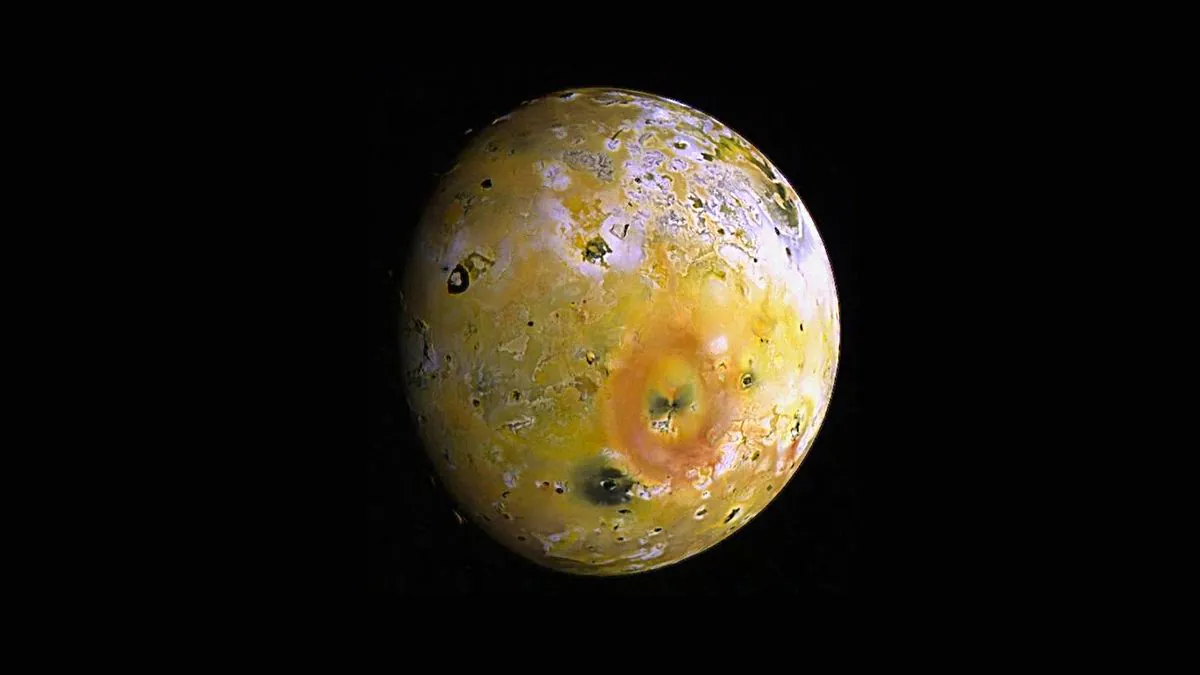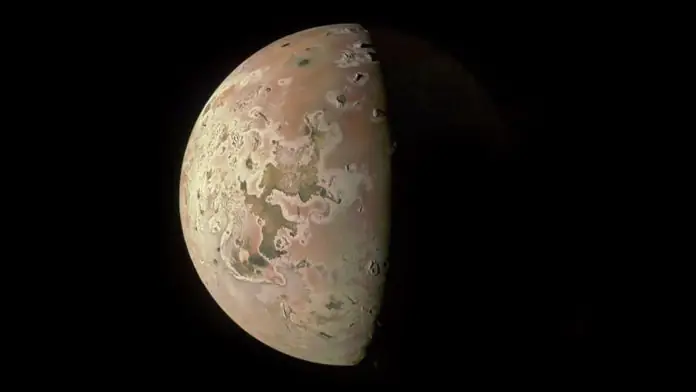© ROOT-NATION.com - Use of content is permitted with a backlink.
Scientists on the NASA Juno mission have turned camera data collected during two recent flybys of Io into an animation that shows a mountain and a nearly glassy lake of cooling lava. Other recent science results from the spacecraft include updates on Jupiter’s polar cyclones and abundance of water

In December of last year and in February of this year, Juno approached the surface of Io at a distance of about 1,500 km during the flyby and acquired images of the satellite’s northern latitudes. “Io is simply dotted with volcanoes, and we filmed several of them in action,” say scientists. – We also got great close-ups and other data on the 200-kilometer lava lake called Patera Loki. The mirror image of the lake, which the instruments recorded, shows that some areas of Io’s surface are as smooth as glass, reminiscent of the volcanic obsidian glass on Earth.”
The maps, based on data collected by the Juno radiometer, show that Io not only has a relatively smooth surface compared to Jupiter’s other Galilean moons but also has poles that are cooler than mid-latitudes. During the long mission, the probe is getting closer to Jupiter’s North Pole with each flyby. This change in orientation allows the instruments to improve the resolution of Jupiter’s northern polar cyclones and to compare the poles at different wavelengths.
“Perhaps, the most vivid example of such inequality is the central cyclone at the north pole of Jupiter,” the scientists note. – It shows up well in infrared and visible images, but its microwave signature is nowhere near as strong as other nearby storms. This tells us that its subsurface structure must be very different from other cyclones. The team continues to collect more and more data, so we look forward to developing a more detailed 3D map of intriguing polar storms.”
One of the main scientific goals of the mission is to collect data that will help scientists learn about water on Jupiter. To do this, the Juno science team seeks to quantify the presence of oxygen and hydrogen molecules in Jupiter’s atmosphere. An accurate estimate is critical to piecing together the puzzle of our solar system’s formation. Jupiter was probably the first planet to form, and it contains most of the gas and dust that did not make up the Sun. The abundance of water is also important for the gas giant’s meteorology and internal structure.
In 1995, the NASA Galileo probe provided the first data on the amount of water on Jupiter during the spacecraft’s 57-minute descent into the atmosphere. But these data raised more questions, indicating that the atmosphere of the planet turned out to be unexpectedly hot and – contrary to computer models – devoid of water. “The probe’s data were so far from our models of water content on Jupiter that we wondered if the location where it took the sample might be an anomaly,” the scientists said. “We now know for sure that Galileo’s entry point was an abnormally dry, desert-like region.”

The results of the study confirm the assumption that during the formation of the Solar System, water-ice material could be a source of enrichment with heavy elements during the formation and evolution of the gas giant. The formation of Jupiter remains a mystery, as the results of studies of its core indicate a very low water content, and this mystery remains to be solved.
Data from Juno’s long-duration mission could help: They will allow scientists to compare the amount of water in Jupiter’s polar regions with its equatorial regions, and shed additional light on the structure of the planet’s rarefied core. During Juno’s last flyby of Io on April 9, the spacecraft approached the surface of the satellite at a distance of about 16,500 km. It will make its 61st flyby of Jupiter on May 12.
Animated gif showing 13 of the images from Juno's encounter with Io this week! Great views of Pele, Xihe, and Io's south polar region. pic.twitter.com/rh8zWfJiiI
— Jason Perry (@volcanopele) April 13, 2024
Read also:
- NASA’s Ingenuity drone sent the last message from Mars to Earth
- NASA has confirmed the Dragonfly mission to Saturn’s moon Titan


